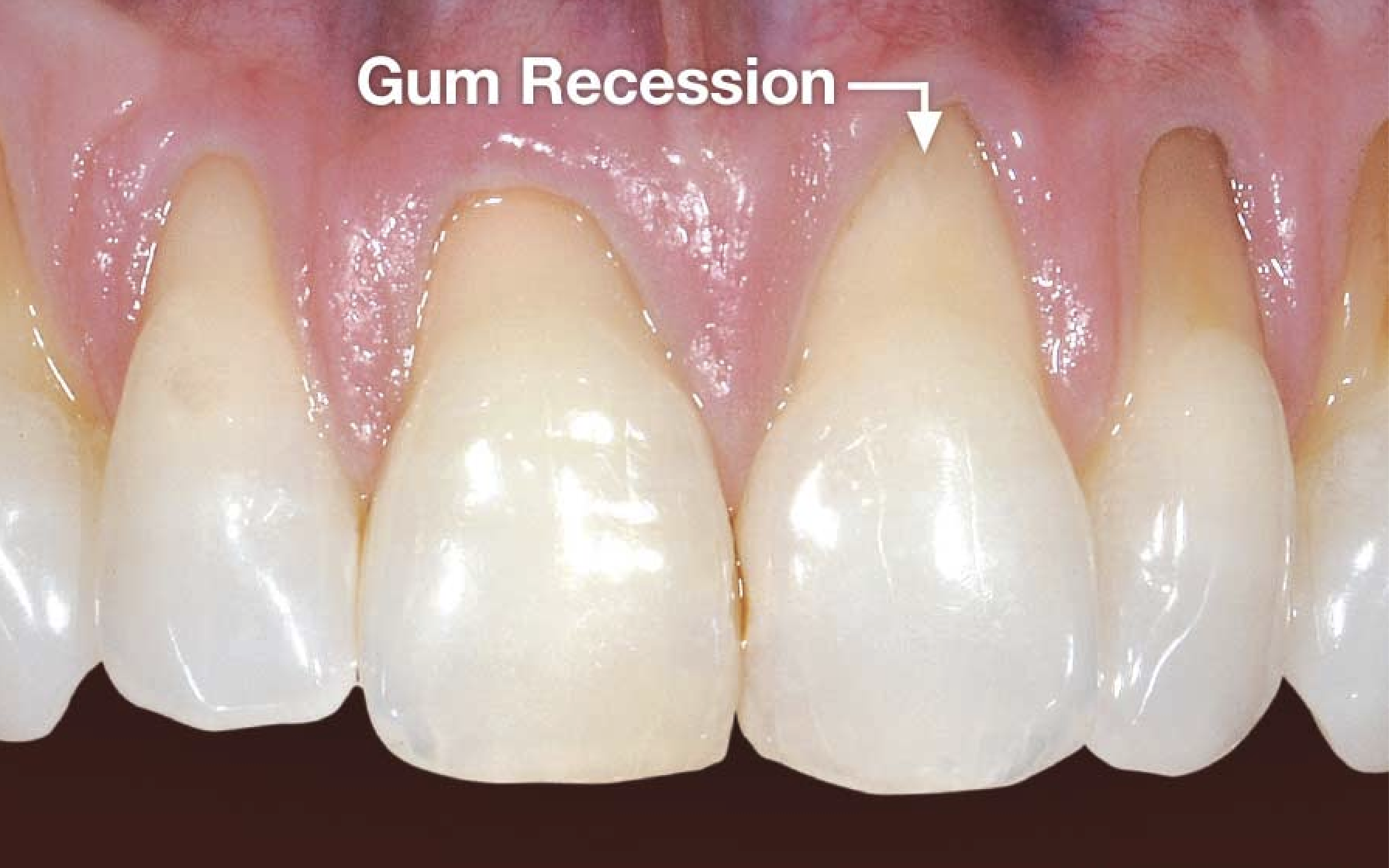
Gum recession is a common dental issue that many patients encounter and can be quite uncomfortable. When your gums recede, your teeth become sensitive and more prone to decay. At Agape Dental, we strive to provide our patients with quality and affordable preventative and restorative dental treatments. To learn more about our services, contact our Millwoods dental clinic today.
What is Gum Recession?
Gum recession is considered a dental condition where the gum tissue surrounding and supporting your teeth wears away, exposing more of the tooth’s surface. When this occurs, it can alter the appearance of your tooth, making it appear longer than usual. You may also notice that the space between your teeth looks wider.
It’s important to visit a dentist near you to address this issue promptly; otherwise, it can encourage sensitivity, tooth decay, and other dental problems to arise and severely impact not just the aesthetic but functionality of your smile if left untreated.
Dealing with gum recession and its symptoms can be a frustrating; here at our Edmonton dental clinic, we offer you and your loved ones both advice and effective treatments to help protect your smile from succumbing to this problem.
What Causes Gum Recession?
Gum recession can lead to tooth sensitivity and even tooth loss in more serious instances. Various factors, including poor dental hygiene, gum disease, aggressive brushing, teeth grinding or clenching, and genetics, can contribute to the development of gum recession. Explained below are some of the most common factors that contribute to the development of gum recession:
Poor oral hygiene: Not following a daily dental hygiene routine like brushing and flossing can lead to plaque and tartar buildup, which can irritate and inflame the gums and eventually cause them to recede.
Gum disease: Periodontitis is one of the top reasons why gums are unhealthy. In addition to causing inflammation, infection, and of course gum recession, patients can also experience tooth loss.
Aggressive brushing: Brushing too hard or using a toothbrush with hard bristles can damage the gum tissue, therefore contributing to the recession of these tissues over a lengthy period. Ensure you and your family use a soft-bristled toothbrush.
Genetics: Genetic factors are the reason why some people may be more prone to gum recession. Examples include having a history of gum disease in your family.
Hormonal changes: Hormonal fluctuations, such as those changes experienced during pregnancy, puberty, or menopause, can make the gums more susceptible to infections and recession.
Grinding teeth: Excessive force on the teeth and gums can cause them to wear down over time, leading to recession.
Symptoms of Gum Recession
There are several noteworthy symptoms of gum recession, including the following:
- Tooth sensitivity: Receding gums expose tooth roots, which can lead to heightened sensitivity to hot, cold, sweet, or sour foods and drinks.
- Visible changes: You may notice that your gums appear lower; this can impact the aesthetic appearance of your smile.
- Spaces between teeth: When your gums pull back, observable gaps or spaces can form between your teeth.
- Tooth mobility: In more serious cases, gum recession can cause teeth to become extremely loose or fall out completely.
- Redness or swelling: The affected area may become inflamed or swollen when you perform your routine oral hygiene activities.
How to Treat Gum Recession?
One of the most important things you can do to treat gum recession is to improve your dental hygiene habits and avoid smoking. Brushing your teeth twice daily with a soft-bristled toothbrush and fluoride toothpaste, flossing daily, and using mouthwash can help prevent further recession and promote positive gum health.
In other cases, more advanced treatments may be necessary. Here are some common gum recession treatments a dentist near you may recommend:
- Scaling and root planing: This deep cleaning method removes plaque and tartar buildup below the gum line and smooths the tooth root that can attract bacteria. This can help the gum tissue reattach to the tooth and prevent further recession.
- Gum grafting: During this dental procedure, our Edmonton dentist takes a small piece of tissue from another area of your mouth and attaches it to the area of recession. The graft can help cover the exposed tooth root and prevent further recession.
- Pinhole surgical technique: This minimally invasive procedure involves making a small hole in the gum tissue above the affected tooth and using special instruments to gently loosen and reposition the gum tissue over the exposed tooth root. No sutures are required; the recovery time is typically shorter than traditional gum grafting.
- Antibiotics: If an infection causes gum recession, antibiotics may be prescribed to eliminate the bacteria and promote gum healing.
- Orthodontic treatment: If misaligned teeth cause gum recession, orthodontic treatments such as braces or Invisalign may be recommended by a dentist near you to improve tooth positioning and reduce pressure on the gums.
Remember, early detection and prompt treatment are key to treating gum recession. Schedule a dental checkup at our Edmonton dental clinic if you notice any signs of gum recession, such as tooth sensitivity or exposed tooth roots. Our dental team will be happy to evaluate your oral health and recommend the best treatment plan to restore your beautiful smile.
Contact Agape Dental today at (780) 465-1211 to learn more about gum recession treatments in Millwoods.

